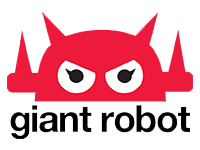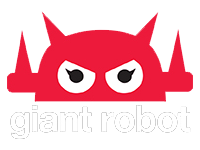Giant Robot Store and GR2 News
Art has the power to provoke ideas and inflame passions. Politics and art, in this way, go hand in hand. When an event of historical magnitude occurs, it’s only a matter of time before an artist emerges and addresses it. Prime Minister Shinzo Abe’s economic plan (Abenomics) as the story of the hour in news circles, it’s easy to forget that Japan endured a nuclear catastrophe just 2 years ago. In March 2011, the Tokyo Electric Power Company’s Fukushima Daiichi Nuclear Power Plant underwent a partial meltdown from the 3.11 Earthquake and Tsunami. Approximately 157,000 residents were forced to flee their homes due to radioactive contamination in Fukushima prefecture with little hope of ever returning. Critics blamed the disaster on negligence and incompetency concerning safety regulations willingly overlooked by TEPCO and the Japanese government. Flash-forward to today and the public carries on as if it’s business as usual. The earthquake, tsunami, or even Fukushima rarely comes up in casual conversations. On the surface, it appears that the populace and Japanese government have forgotten the disaster altogether. One artist hasn’t. The man calling himself 281_Anti Nuke designed stickers, posters, and indiscreetly plastered them throughout Tokyo. His most recognizable piece is a small girl in a slicker with “I hate rain” printed beneath. It isn’t until you glimpse a nuclear trefoil inscribed beneath the text that its message dawns on you and all the events broadcasted from yesteryear return to you in a flood of regret. His ‘mock’ propaganda is a sharp–albeit intrusive– reminder of the gravity of what happened in Fukushima not so long ago. It’s a tragedy that he claims the government created. It’s a tragedy that he believes they coerced the public to forget. Giant Robot Magazine previously reported sightings of his art in October 2011. Back then, information on 281 was scarce. Two years later, major outlets like The Economist, Financial Times, and Wall Street Journal have featured photos of his art in articles about national politics. Others like Japan Rolling Stones, Channel 24, and The Japan Times have even interviewed the enigmatic artist himself. Besides his distrust of the Japanese government and his drive to hold them accountable, almost no one knows anything about 281′s personal life–let alone his actual name. The retrospective at the Pink Cow bar in Roppongi on June 6th, 2013, was held to raise awareness of his work and offer a little more insight into the artist himself. The retrospective hosted a preview screening of filmmaker/photographer Adrian Storey’s self-titled documentary about 281. Storey formerly featured some of 281′s designs in a segment that he submitted for Ridley Scott’s Japan in a Day documentary. 281 contacted Storey and requested permission to use the images from Japan in a Day for his own personal website. Story agreed on the condition that 281 consent to be the subject of the aforementioned self-titled documentary. Filming began in January of this year. Stroey’s documentary not only depicted the platform for 281’s opposition to the corruption of Japanese politicians and nuclear industry, but...
Continue reading
The Wall Street Journal’s Japan Realtime reports on an interesting show at London’s Wellcome Collection, “Souzou: Outsider Art from Japan”. The venue is intriguing – a home for the collection of a wealthy pharmaceutical magnate who traveled the world and collected art and objects related to medicine – an interesting residence for this particular group show. The artists are all disabled beneficiaries of Japan’s social welfare program, Haretari Kumottari, which is engaged in the arts as a means of self-expression for marginalized members of society. Over 300 pieces represent the work of “disabled” people with no formal training in the arts, but an uncanny knack for creativity and imaginative expression. They look like a pretty capable bunch to me. The show is being blogged about, featured in international media, and perhaps raises the aesthetic bar for some people who thought Outsider Art was just scrap metal welded into zoo animals by people who’d never been to a zoo. Now it’s also Gundam mecha made out of shiny twist ties! It definitely looks like a show worth checking out if you’re in London. It runs through June 30th, with free guided tours, and a ton of educational events tied in. We’re not really fans of the label “Outsider Art”, but it’s not going away as long as it still appeals to the mainstream art market that relies heavily on “Insider” art existing. The WSJ article seems a bit behind the times on the rise of the Japanese art world beyond what makes it to MoMA, but they still get kudos for spotlighting Souzou. The work being shared from this show brought me back to 2006, when Eric was invited to be a juror for Takashi Murakami’s GESAI art festival. GESAI has been pivotal in opening up the Japanese art world to more than just the juggernauts, and creating access and exposure for its “outsiders”. I was lucky enough to go in 2008, and was completely blown away by the wall to wall magic. Every other exhibit booth had work that felt completely original, earnest and gallery-worthy. It felt like home, and we all came back from that trip re-energized and enthusiastic about what supporting artists meant to all of us. I love when art can do that, when it can create (sometimes inadvertently) a world that you feel a part of. I’m not sure the Souzou artists would want us all up in their heads, but I thank them for sharing these pieces which brought me back to a very special experience, and a reminder of how powerful creative expression can be.
Continue reading
Photos by Ahn Sehong capture “comfort women” in Korea. Most are poor, broke, and even embarrassed. The ones that photographer Ahn Sehong photographs are still living in China, the place they were sent and subsequently “left” after World War 2. It’s a sad tale that has no resolve. (NY Times – Korean Comfort Women) “Comfort Women” will be on view at the Korea Press Center, 7 Broad Avenue, Palisades Park, N.J., through April 18.
Continue reading
OITA ~ “Skull Reaper Eiji” (transliterated as “Skull Reaper A-ji” by the Western press) was elected to the city council in this city on the southernmost Japanese island of Kyushu back in February promising local folks educational reform and improved social welfare facilities. He managed to garner only 2,828 votes, but that was enough to win him a seat. Eiji, 44, was supposed to attend his first council meeting this week, but his tight-assed council colleagues sucker-punched him by barring him from the meetings until he removed his wrestling mask. The Skull Reaper is the third masked politician elected to public office in Japan. [TIME ~ Politician Banned for Wearing Wrestling Mask] [youtube]Qid_vhLZPQ4[/youtube]
Continue reading
Amazing images of how things changed or didn’t too much in Japan. (Rocketnews24 – Tsunami)
Continue reading



